Gamification in Esports Part 2: A League of Legends Watch Rewards Case Study

Academy Lead
Back in 2019, we hosted some TJC interns and part of their assignment during their time at Gametize was to write an article about gamification in their area of interest. One of the students, Li Zhong, wrote an article about gamification in Esports.
This piqued my interest – although I’ll admit, I myself only watch Starcraft 2 tournaments, I was inspired to research more into the topic and found a whole goldmine to be unearthed on how the gaming industry has tapped on gamification to boost consumer engagement, especially in Esports.
The genesis of Esports
The video game industry is booming. Let’s go by League of Legends alone – it generated more than $1.5 billion dollars in revenue in 2019, and that’s just a fraction of the reported $120.1 billion total by the global games market for the same year.
Esports itself has actually been around longer than you might expect, with the earliest known video game competition taking place in 1972. Following the inevitable march of technology, the Esports scene has exploded in the past decade.

Even though Esports hasn’t quite reached the Olympics yet (we’re getting there – if not for COVID-19, Intel would’ve held the Intel World Open in 2020 to lead up to the Tokyo 2020 Olympic Games), it’s hard to deny how prolific the gaming industry is. With that, the video gaming industry is always looking for ways to constantly grow their consumer base and engage their consumers. That’s where gamification can come in.
How the video gaming industry leverages on gamification to engage their consumers
“How can you gamify video games?” is probably something you’re asking. Firstly, let’s ask why you would gamify video games in the first place.
Gamification, in the case of consumer engagement, is to engage and motivate consumers into behaviors that directly or indirectly increase sales.
Most video games already have an active community of video game players, i.e. their consumers. Game studios want to engage these consumers to keep interacting with their brand.
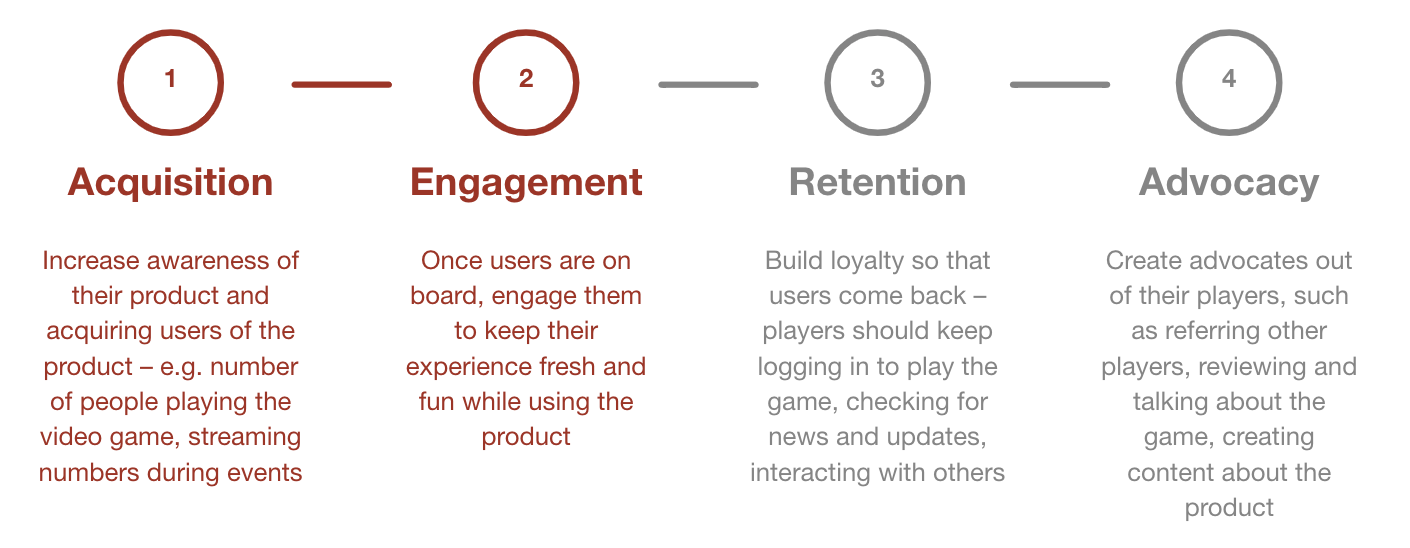
Examples of methods that game studios use to engage their consumers and build advocacy:
- Hosting events, esport tournaments, and championships
- Managing their image through influencer marketing (e.g. YouTubers and Twitch streamers – people who play and review the game on their channels)
- Campaign launches for the special events in-game, and timed events
- Reward & loyalty programs for playing the game and going above and beyond in the game (in real-life) to keep them playing the game – for example, rewarding consumers with skins, emotes, points and in-game currency for referring friends, watching streams, attending events, etc.
Case Study: League of Legends
Let’s use League of Legends as an example to do a deep dive.

League of Legends is a multiplayer online game developed by Riot Games. Despite being more than 10 years old, it’s still extremely popular, with 27 million daily active players.
It also has an extensive community built around it, whether it’s content creators (such as reviewers and streamers – which they’ve created the Partner Program for), and a competitive scene in the form of professional and amateur Esports and Championships.
League of Legends: Watch Rewards
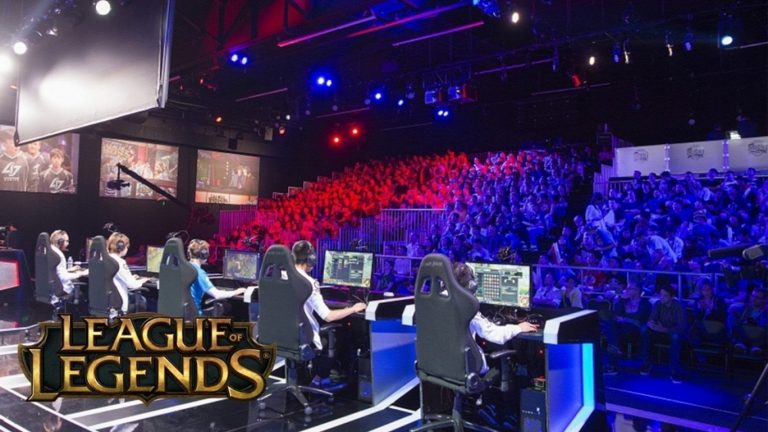
LoL holds an annual eSports tournament called the World Championship, where professional teams compete in officially ranked matches. Annual viewership is in the millions, and is steadily increasing. In 2016, there were 36 million viewers (that’s more than the number of people who watched that same year’s NBA finals, at 31 million).
Riot Games introduced Watch Rewards for their 2018 World Championship as a way to engage people to watch more matches, and to keep them watching throughout the course of the championship.

Whether intentionally or not, League of Legends have gamified their Watch Rewards. Why don’t we use Gametize’s 5D Framework to analyze the Watch Rewards?
Problem Statement
- How to attract enough people to watch the World Championship to justify investing in it? After all, the higher the viewership, the more influence and reach you have in the way of prestige, sponsorships, and partnerships.
- How to engage people while they are watching, so that they can keep watching more matches (decreasing drop-off), and come back for subsequent World Championships?
Goals & Target Behaviors
The overarching, high-level business goal would be to increase engagement with the brand via the World Championship. To break down the overarching mission into more smaller goals:
- Acquisition: Increase viewership numbers
- Engagement: Increase number of matches watched per person, and the time spent watching matches
- Retention: Increase the number of tournaments one user watches in their lifetime
All of this translates to engagement with the brand, such as discussions and reactions to matches, increased awareness, and possibly discussions on the game itself – for example, strategies and mechanics of the game utilized during the Esports tournaments.
Target Audience

I won’t profess to be extremely familiar with who watches the League of Legends World Championship, but based on my own profile as an avid Starcraft 2 Esports enthusiast, it’s usually Esport aficionados who already play the game on some level (Watch Rewards knows this – their rewards include in-game items) and may watch other Esports tournaments and have some knowledge of their favorite teams and players. They might also be interested to attend real-life tournaments.
While that’s the core target audience that the Watch Rewards program is designed for, it might be worth considering that other factors such as national pride also play a role in who watches Esports. When China’s Invictus Gaming defeated European squad Fnatic in the League of Legends 2018 finals, this caught the attention of social media and even the Chinese government.
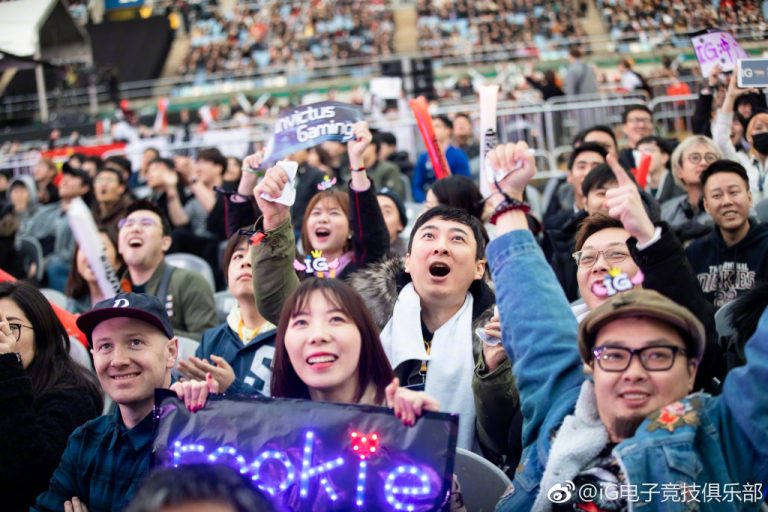
Design Strategy – Structure & Narrative
The way League of Legends designed their Watch Rewards program is to recognize and reward those who watch professional tournament matches on lolesports.com. The “structure” for the Watch Rewards is very much like a game – you land on a Dashboard that gives an overview of your missions and progress/activity.
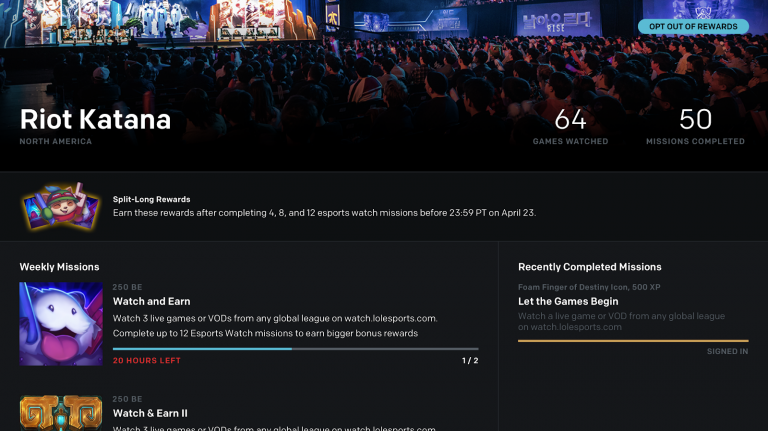
Each mission has a different challenge – for example, watching a live game, linking your Riot and YouTube account, making a prediction on which team will win. They even have a game structure in the difficulty progression! You start off with an easy Starting Mission to watch any live game or VOD, before tackling more “difficult missions.”
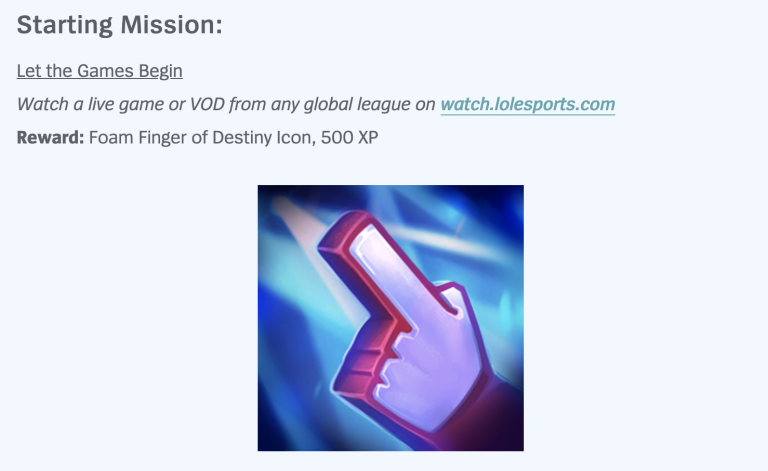
There’s also a sense of exclusivity and urgency – some missions are timed, while some missions might give out bonuses to users tuning in at specific times, or reward more lucrative prizes for watching more matches in a row.
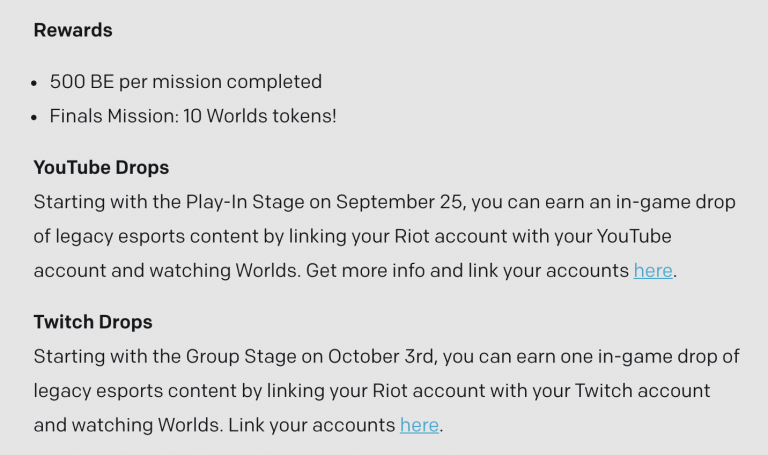
Rewards & Prizes
This is where it’s quite obvious that the Watch Rewards is designed for people who already play League of Legends: rewards can include Worlds Tokens and XP, which can be used in-game to unlock emotes, icons, chromas, borders, and other secret prizes.

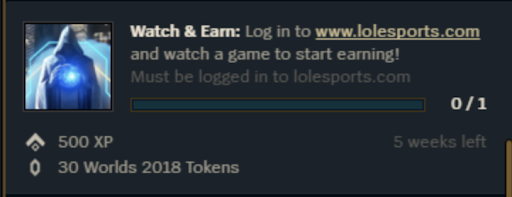
Viewers can also receive exclusive skins, loot, codes, art, and more. Interestingly, for the Perfect Pick Prize (i.e. being able to correctly guess the outcome of every stage of the World Championships, which presumably requires a lot of research, analysis, and luck) for 2020, Riot Games also offered the chance to win a battlestation, i.e. gaming setup.


How successful is League of Legends’ Watch Rewards Program?
It’s hard to find an in-depth study of how successful the Watch Rewards Program actually is. This OkGamer article touches on this briefly:
“Even though it seems Riot is really proud of their rewards solution, the fans don’t seem as happy. While the prestige points and skin shards were anticipated as rewards, players feel the other drops aren’t rewarding enough.
A quick scroll on Twitter and Reddit shows some mixed opinions – even the positive ones seem to imply that they’d already been watching the matches, and that the rewards were simply a nice bonus, or that they’d need to switch watching on their favorite channels to watch on PC instead to get the rewards.


The less favorable sentiments center around how the rewards given could be better, given the time investment needed to watch the watches.


There’s also some discussions about how people tune in to the matches simply to get the rewards, without actually watching the matches – not quite a ringing endorsement for engaged, involved users.

Then again, most of these are more about how to improve the Watch Rewards system; the fact is, after all, that people are opting in to the Watch Rewards and going out of their way to change their behaviors (e.g. switching the medium on which they watch the matches) because of the program.
Looking forward
Watch Rewards is just one way that Riot Games has incorporated gamification into their consumer marketing and engagement strategy – and it’s clear from user reception that they’ve got something going, but still have a long ways to go. Other than addressing the technical aspects, they’re also exploring expanding their offerings by opening up Watch Rewards to regular season games for various leagues around the world, as well as growing the watch.lolesports.com experience by incorporating Watch Rewards with other new features , such as Global Schedules, Globe VODs, and Global Live Stats.
As the Esports scene continues to grow, it’ll be interesting to see how such companies utilize different engagement strategies – such as gamification – to continue growing their presence.
Published on 1 December, 2020
Related Links:

“Good post. I learn something new and challenging on blogs I stumbleupon on a daily basis. It will always be helpful to read through articles from other authors and practice something from other sites.”
שירותי נערות ליווי בירושלים
gder4563